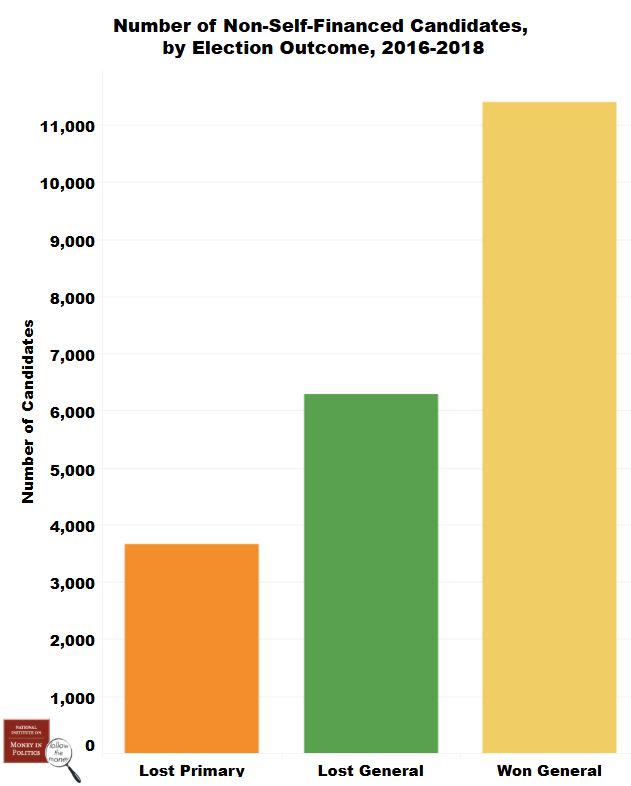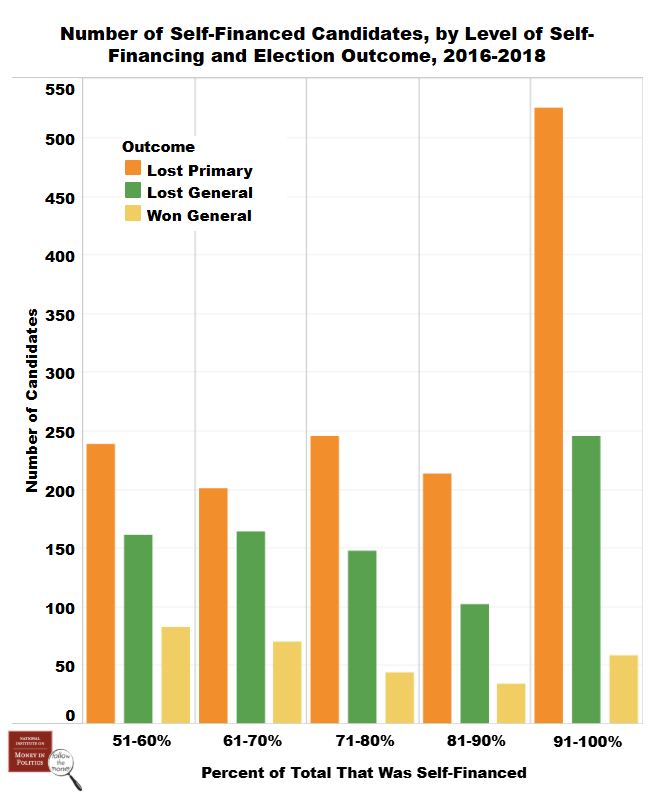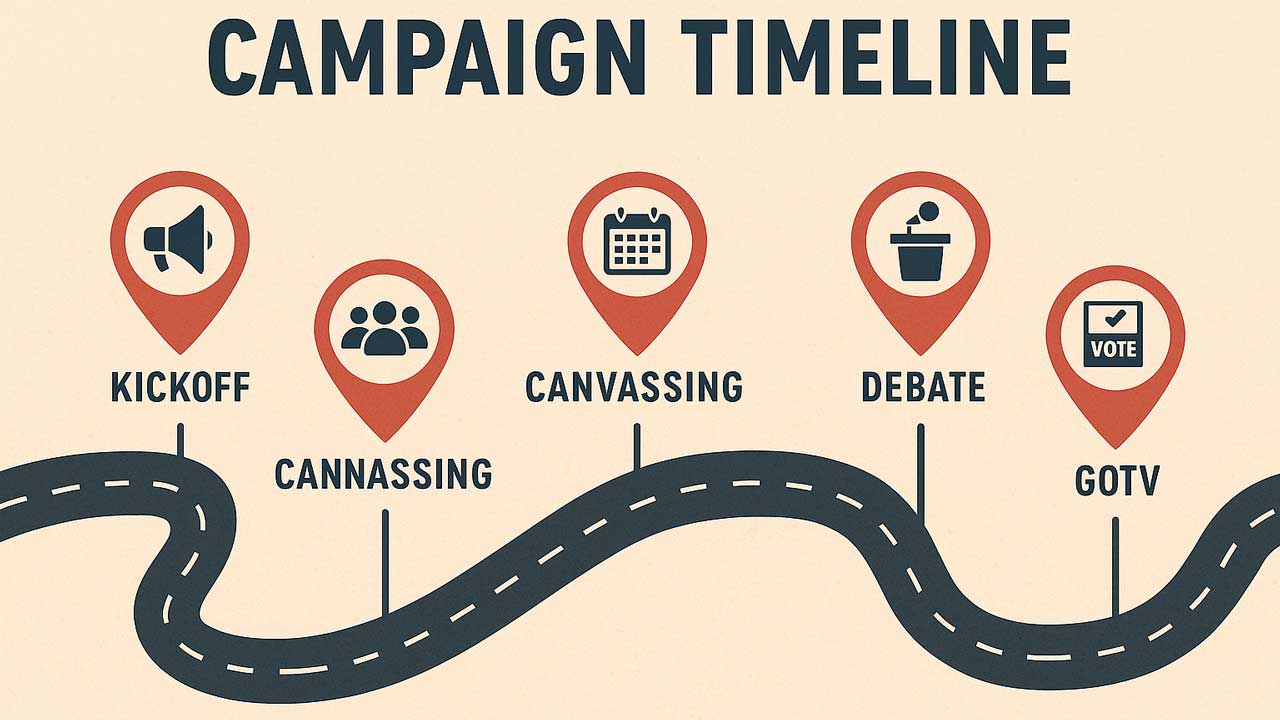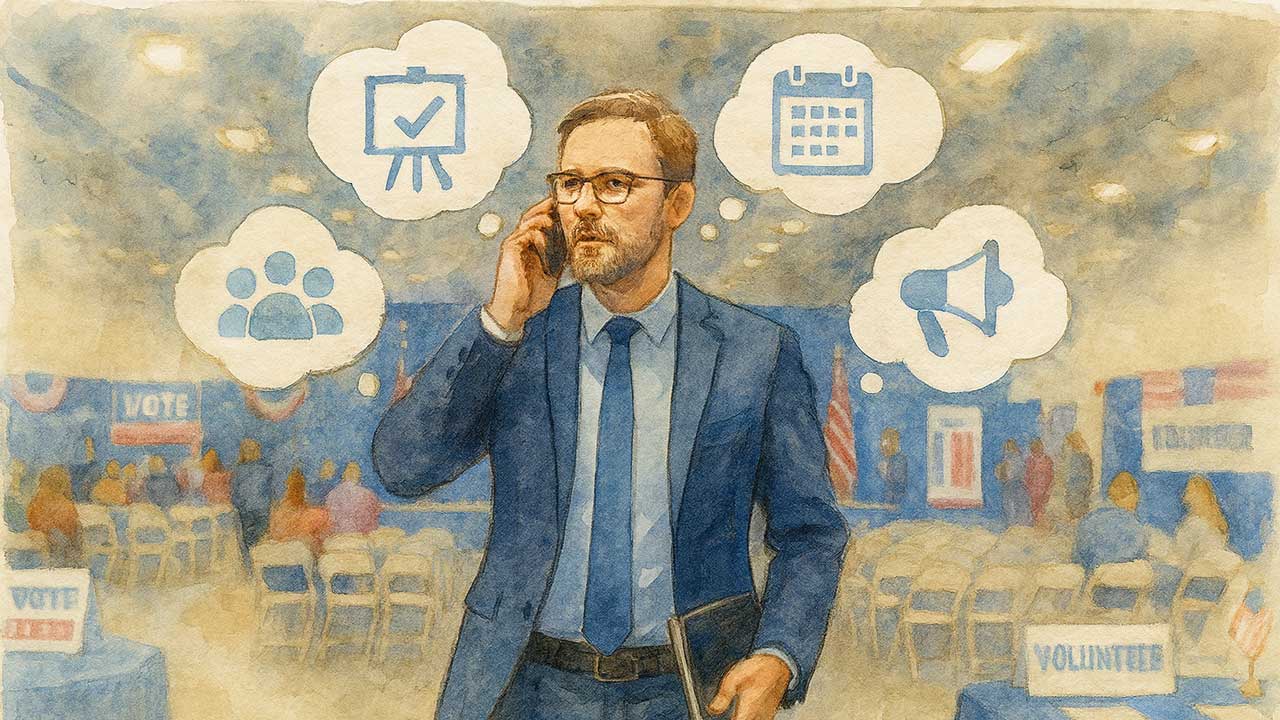The Hidden Cost of Self-Financing a Campaign
Too many hopeful candidates have emptied savings accounts, mortgaged their homes, or spent their nest egg chasing political dreams, only to see it all vanish after a loss. Financing your own campaign is the fastest way to lose both your savings and your election. Real political strength comes from persuading others to invest in your candidacy. Campaigns that thrive are those fueled by a community of supporters, not by one person’s bank account.
What does it mean to ‘Self-finance’ a campaign?
In practical terms, self-financing means paying more than half of your campaign’s budget with personal money. That can include savings, retirement funds, or home equity. Candidates sometimes choose this path because, unlike donors who face strict limits, they can spend unlimited amounts of their own money. While it may look like commitment, it tells voters and donors the candidate cannot build real support and is simply trying to buy legitimacy.
The Golden Rule: Don’t Pay for Your Own Campaign
Self-financing is often defined as providing more than half of your campaign’s budget from your own pocket. On the surface, it may look like strength: a candidate who can “go it alone.” In practice, it is one of the worst strategies in politics.
Self-funding isolates candidates and signals a lack of community support. Voters and journalists alike draw the same conclusion: if you cannot persuade others to donate, why should anyone trust you to lead? Campaigns funded through outside contributions generate buy-in from individuals and volunteers, transforming passive observers into active advocates.
The data backs this up. Analyses of state legislative and gubernatorial races show self-funded candidates win at dramatically lower rates, even when they outspend their opponents. The pattern is clear: money alone cannot buy the one resource that matters most, genuine support. There are countless stories of candidates who lost both their races and their financial security after draining their personal accounts.
The only exception is a short-term bridge loan to cover immediate campaign needs, like printing yard signs. Even then, the campaign should repay that loan as soon as donations come in. It is a stopgap, not a strategy.
(Below) According to the National Institute on Money in Politics, non–self-financed candidates were far more successful in 2016–2018: over 11,000 won their general elections, compared to fewer than 7,000 who lost, highlighting the strong advantage of raising funds from supporters rather than self-funding.

(Below) Data from the National Institute on Money in Politics shows that candidates who relied most heavily on self-financing in 2016–2018 were far more likely to lose their primaries or general elections. Those who funded 91–100% of their campaigns themselves had the worst outcomes, with very few winning in the general election.

Winning Campaigns Are Built on Networks, Not Just Roots
A common myth in politics is that only candidates with deep community ties, such as a prominent family name, local business ownership, or decades in the neighborhood, can succeed. While those advantages can help, they are not prerequisites. What matters more is building networks of supporters and donors.
I have personally helped candidates who started with very small networks and little name recognition overcome well-connected opponents. By cultivating relationships, mobilizing volunteers, and consistently asking for financial support, they built credibility and momentum. Fundraising itself is a demonstration of viability. If you can inspire others, they will invest in your candidacy. If you cannot, no amount of personal cash will change the outcome.
Proven Ways to Fund a Campaign Without Your Own Cash
Ask for Donations at Events
Party meetings, political clubs, and civic organizations are natural venues to share your vision. Every appearance should end with a clear, specific ask. For example: “One sign costs $6, and I need 3,000 more. Give what you can to help us get there.” That kind of ask connects contributions directly to campaign needs.
Host House Parties and Small Gatherings
Supporters are often eager to help, even if they cannot contribute much financially. Opening their homes for small fundraisers allows friends and neighbors to meet you in a personal setting. These gatherings create grassroots momentum and expand your donor pool beyond your immediate network. When someone says, “I do not have much money to give, but how can I help?” that is the perfect opportunity to suggest hosting a fundraiser at their home, in a private room at a restaurant, or even in a reserved space at a local park.
Partner with Other Candidates
Joint events allow you to share costs, broaden exposure, and cross-pollinate donor bases. Voters attending to hear one candidate may walk away supporting two.
The Candidate’s Hardest but Most Crucial Task: Making the Ask
Every serious campaign requires the candidate to spend hours on the phone, calling friends, family, and old colleagues to ask for donations. It is uncomfortable, but it is also non-negotiable. This discipline not only builds the financial foundation of your campaign but also demonstrates commitment.
Too often, candidates look for shortcuts. They may try to offload fundraising onto their campaign manager, assuming that is part of the job. It is not. In fact, when campaign managers ask for money on behalf of the candidate, it often frustrates potential donors who expect to hear directly from the person seeking office. The role of the campaign manager is to create the right environment for donations to happen: organizing events, scheduling calls, and setting up opportunities. The candidate must step up to make the ask. Think of it like baseball — the manager can tee up the ball, but only the candidate can take the swing.
Psychologically, donors give because they want to be part of a cause bigger than themselves. They are not bailing out a candidate’s inability to pay; they are investing in values, ideas, and representation. By asking, the candidate gives people the chance to become true partners in the success of the cause.
Digital Tools Support the Campaign, Never Replace Personal Outreach
Social media and campaign websites are powerful tools, but they must be used strategically. They should amplify, not replace, the fundamentals of fundraising and voter outreach.
-
Amplify events and fundraising efforts: Post clips from speeches, photos from house parties, and direct donation appeals.
-
Connect with broader networks: Small-dollar donors often come through social platforms where a share or repost can extend your reach exponentially.
-
Show proof of momentum: Public updates on fundraising progress encourage more giving, building a sense of collective achievement.
Digital tools make your campaign louder and more visible, but they cannot substitute for the personal connections and direct asks that secure real support.
For the Candidate: Building a Movement Means Raising Money, Not Spending Your Own
Campaigns are about building movements, and movements cannot be bought with personal funds. Candidates who self-finance are not proving independence; they are signaling isolation and weakness. The ones who win are those who ask others to invest, showing they can unite people behind a cause.
The courage to ask others for help is what separates winners from the long list of self-funded losers.



